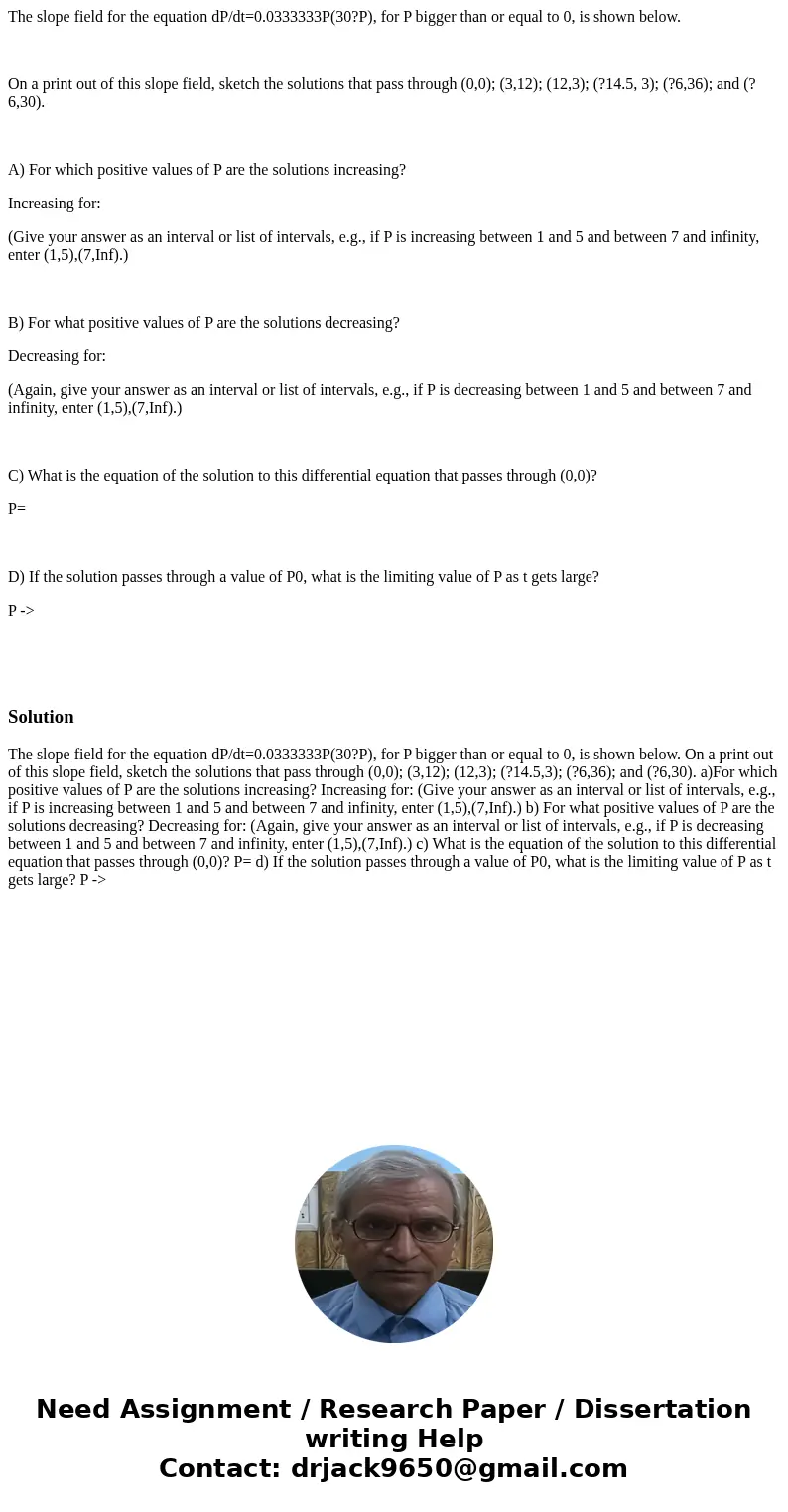The slope field for the equation dPdt00333333P30P for P bigg
The slope field for the equation dP/dt=0.0333333P(30?P), for P bigger than or equal to 0, is shown below.
On a print out of this slope field, sketch the solutions that pass through (0,0); (3,12); (12,3); (?14.5, 3); (?6,36); and (?6,30).
A) For which positive values of P are the solutions increasing?
Increasing for:
(Give your answer as an interval or list of intervals, e.g., if P is increasing between 1 and 5 and between 7 and infinity, enter (1,5),(7,Inf).)
B) For what positive values of P are the solutions decreasing?
Decreasing for:
(Again, give your answer as an interval or list of intervals, e.g., if P is decreasing between 1 and 5 and between 7 and infinity, enter (1,5),(7,Inf).)
C) What is the equation of the solution to this differential equation that passes through (0,0)?
P=
D) If the solution passes through a value of P0, what is the limiting value of P as t gets large?
P ->
Solution
The slope field for the equation dP/dt=0.0333333P(30?P), for P bigger than or equal to 0, is shown below. On a print out of this slope field, sketch the solutions that pass through (0,0); (3,12); (12,3); (?14.5,3); (?6,36); and (?6,30). a)For which positive values of P are the solutions increasing? Increasing for: (Give your answer as an interval or list of intervals, e.g., if P is increasing between 1 and 5 and between 7 and infinity, enter (1,5),(7,Inf).) b) For what positive values of P are the solutions decreasing? Decreasing for: (Again, give your answer as an interval or list of intervals, e.g., if P is decreasing between 1 and 5 and between 7 and infinity, enter (1,5),(7,Inf).) c) What is the equation of the solution to this differential equation that passes through (0,0)? P= d) If the solution passes through a value of P0, what is the limiting value of P as t gets large? P ->
 Homework Sourse
Homework Sourse